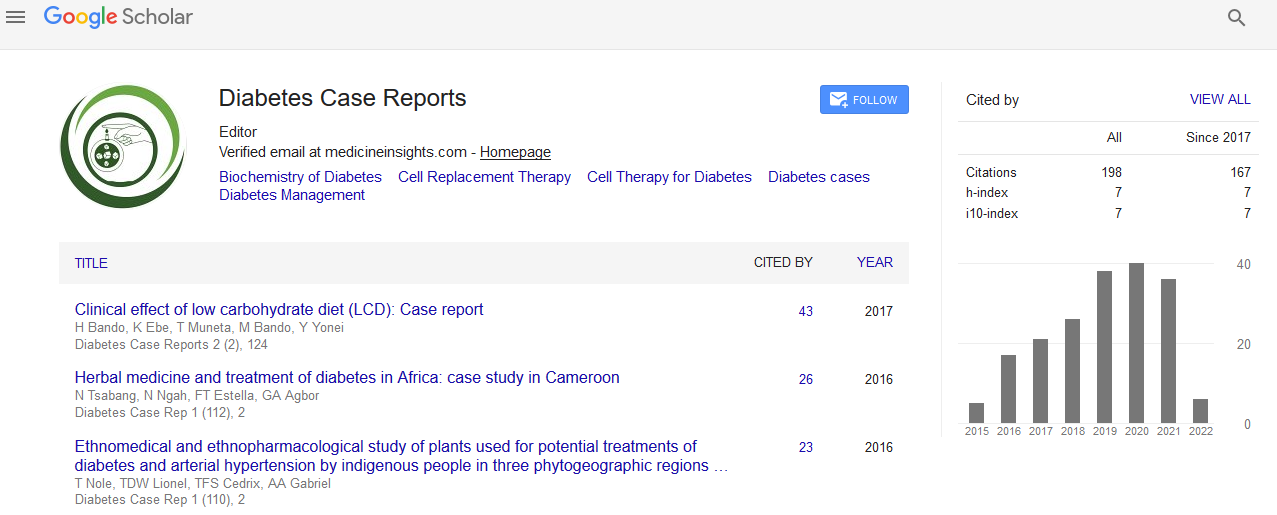Indexed In
- RefSeek
- Hamdard University
- EBSCO A-Z
- Euro Pub
- Google Scholar
Useful Links
Share This Page
Journal Flyer

Open Access Journals
- Agri and Aquaculture
- Biochemistry
- Bioinformatics & Systems Biology
- Business & Management
- Chemistry
- Clinical Sciences
- Engineering
- Food & Nutrition
- General Science
- Genetics & Molecular Biology
- Immunology & Microbiology
- Medical Sciences
- Neuroscience & Psychology
- Nursing & Health Care
- Pharmaceutical Sciences
The effect of Diabetes Mellitus on plantar pressure distribution
22nd Global Conference on Diabetes, Endocrinology and Primary Healthcare
May 30-31, 2024 | Amsterdam, Netherlands
Robert Gajewski, PhD, Łukasiewicz-Łódzki Instytut Technologiczny
Katarzyna Ławinska prof., Łukasiewicz-Łódzki Instytut Technologiczny Katarzyna Piotrowska MSc, Łukasiewicz-Łódzki Instytut Technologiczny
Scientific Tracks Abstracts: J Psychiatry
Abstract:
A commonly accepted view is that the main factor leading to the development of Diabetic Foot Syndrome (DFS) is damage to peripheral nerves. As a result, overloading various areas of the foot leads to the formation of wounds and ulcers. These changes take place in secret for a long time. The patient may not notice the loss of sensation and then be unaware that the pressure on his foot exceeds the permissible values. The aim of this work was to determine changes on the feet triggered by the DM. Four groups of people were selected for the study: healthy people without diagnosed diabetes (control group, 189 people), people with diabetes (C, 97 people), people diagnosed with DFS (DFS, 101 people) and people with advanced RA (RA: 76 people). This group was selected to assess the impact of disturbances in the course of nerve impulses. The exclusion criteria included the presence of open wounds, which excluded some people from the DFS group, but this group included several people (19) who had previously had open wounds. The control group was divided into two subgroups differentiated by the weight. It was in purpose to eliminate the effect of different body weight in people with diabetes with and without DFS Qualification for the DFS group was based on the diagnosis of the attending physician, including the diagnosis of sensory neuropathy, and verification by the Institute’s employees. People with serious accidents and severe congenital foot deformities (clubfoot, etc.) were also excluded. Measurements of plantar pressure distribution was performed with PEDAR system. Measurement were made in dynamic conditions at standardized speed and identical shoes. Based on the results obtained, it can be assumed that in terms of pressure there are no statistically significant differences in the groups of people with diabetes without DFS and people without diabetes. Whereas there is a significant difference between people suffering DM with and without DFS and in case of DFS plantar pressure in crucial point of the foot (metatarsal joints) is much higher, with one exception: 2 metatarsal head. In case of people suffering RA, in most cases pressure was similar to pressure recorded in people with DFS, however in one case (the 2 metatarsal) Pressure was higher in DFS group. The height of pressure was moderately correlated with duration of DFS.
Biography :
Robert Gajewski has been working in pedology sector since 1996. his main area of interest is the prevention of various foot deformations in the course of diseases (RA and diabetes, primarily) but also orthopedic support for the feet as a result of various diseases. The main area of expertise covers prevention of the Diabetic Foot Syndrome. in this matter, he acquired knowledge about the impact of diabetes on the development of foot ailments and deformations. in addition to conducting research on people with diabetes, he uses the acquired knowledge in practice by designing and making individual footwear and insoles for people with diabetes.

